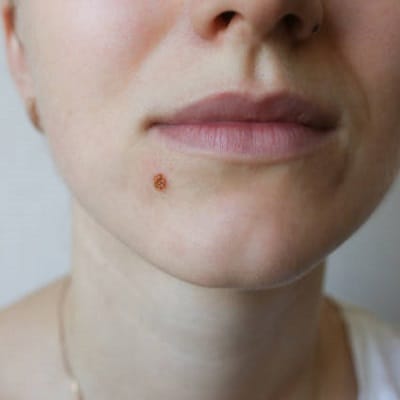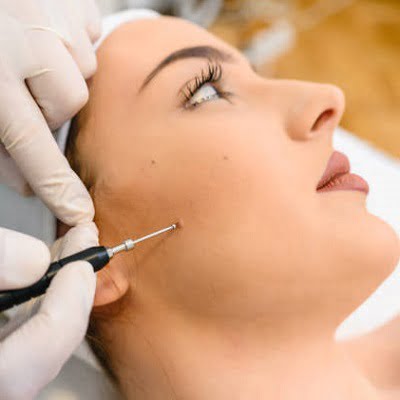
Moles can be a nuisance to many, especially when looking for a flight or at the workplace. Their removal process entails employing several techniques, each having its advantages and disadvantages. A lack of knowledge on which method to apply can cause confusion and, consequently, poor outcomes. Such uncertainty can cause unnecessary stress and contribute to a patient’s deterioration and a failure to seek appropriate treatment at the right time.
Types of Moles and Their Characteristics
Moles exist in different forms and can be classified into different categories depending on their form. Common types include:
Benign Moles are round, of even size and color, and often small in size. They are usually not problematic and do not cause any issues that would warrant removal of the intact follicle.
Dysplastic Nevi can be bigger, shaped irregularly, and have different colors. They may transform into skin cancer and thus require constant observation and, at times, surgery.
Atypical Moles have strange structures and come in weird shades that might alter over time. Biopsy samples are usually taken to check for cancer.
Congenital moles are usually micro or macro. While primarily asymptomatic, giant congenital moles may require mole removal if they become dangerous.
Why Consider Mole Removal?
Medical Reasons:
Skin cancer is perhaps one of the most significant medical reasons for the excision of an individual’s mole. Skin lesions that are of uneven pigmentation, shape or size may be the first signs of skin carcinoma or precancerous skin lesion. Surgical excision of these moles helps in early detection and treatment and the prevention of other serious health complications.
Cosmetic Reasons:
Some want to get rid of it for aesthetic reasons, although this is also very rare. Big, raised, or located moles on the face can cause concern as they impact appearance and self-esteem. They are defects on the skin that can be eliminated to enhance the appearance of the skin and, thereby, one’s face.
Professional Mole Removal Techniques
Surgical Excision
Surgical excision entails cutting out the mole together with a little of the surrounding skin and then joining the zone. It also works when dealing with large or deep moles, as it enables a close look at the removed tissue. Advantages include eradication of the entire growth and accurate diagnosis; disadvantages include the development of scar tissue and the chance of infection. The recovery period is an average of two weeks; a stitch is usually removed after one to two weeks have been completed.
Cryotherapy
Cryotherapy involves applying liquid nitrogen to the mole with the aim of freezing and subsequently eliminating it. It is fast and virtually painless, though not ideal for large or raised moles. It only occasionally results in minor alterations in skin tone or some scarring for a few days. Successful for small, stratified-skin superficial moles, the processes usually last one to two weeks, and the mole involving skin ends up shedding as the skin reforms.
Laser Removal
Laser removal is a process in which the dermatologist uses a laser to break the pigment of the mole directly. It is accurate and comparatively results in a small amount of markings. Mild symptoms that can be observed after the treatment are redness, swelling, and changes in skin pigmentation, which are temporary. It is suitable for flat moles, and one or more sessions are needed to complete the treatment. Healing typically ranges from a few days up to a week, with the recovery of the covered region progressively recovering back to its original state.
Electrosurgery
This procedure uses an electric current to burn and remove the mole under treatment. It is suitable for small to medium-sized moles and rarely causes bleeding. However, it can leave some permanent marks/lines and also takes a slightly longer time to heal than other treatments. After the procedure, the area must be kept clean and dressed, although the complete healing takes several weeks.
Radiofrequency Ablation
In the Radiofrequency ablation procedure, the skin tag is cut through and removed with the help of high-frequency radio waves. This technique is accurate and reduces blood loss during the mole removal process, but it cannot be used to remove all types of moles and may cause mild inflammation. It is best suited for small to medium-sized moles and takes one to two weeks to heal, with proper aftercare to avoid complications.
Post-Removal Care and Recovery
- Maintain cleanness and the absence of dampness in the area.
- Do not scratch scabs or any areas where the skin has peeled because this leads to infections and scarring.
- If any cream or ointment has been advised, put it on as prescribed and put on a clean dressing if required.
Recovery can take a few days to weeks, depending on the method of removal used. Usually, there is some redness, swelling, or slight discomfort, which diminishes gradually over a few hours. To enhance proper healing and prevent other complications, avoid any rigorous activities and sun exposure.
Consultation:
If you want to get the best treatment, consult a professional. We invite you to visit SKN Cosmetics for a consultation, and our professional dermatologist will advise you and help you with any problems. By consulting with a professional dermatologist, you can be informed and be sure which course to follow for the safe eradication of moles.







Book your Appointment